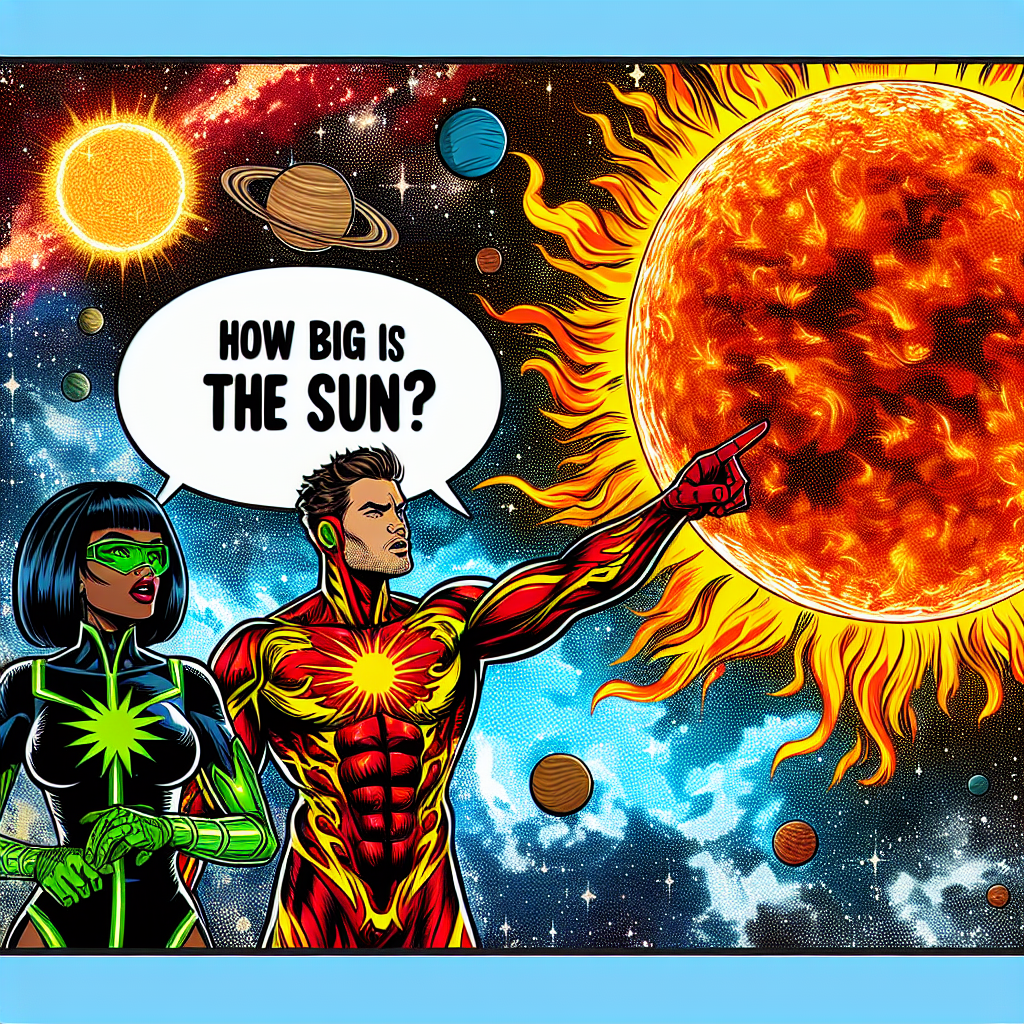The Sun is enormous, but just how big is it? To put it in perspective, imagine a beach ball, about 16 inches in diameter, representing the Earth. Now, scale up the Sun to match: it would be a massive sphere about 109 yards in diameter, or roughly the length of a football field. That's more than 330,000 times larger than our tiny Earth.
One way to grasp the Sun's size is to consider its mass. The Sun makes up 99.8% of the mass in our solar system, with Jupiter, the largest planet, accounting for most of the remaining 0.2%. This means the Sun is so massive that it warps the fabric of space and time around it, keeping the planets in their orbits.
Imagine a gigantic balloon filling with air, growing and growing until it's about 864,000 miles (1,392,000 kilometers) in diameter – that's the Sun's immense size. To put it another way, if the Sun were a hollow shell, it could fit about 1.3 million Earths inside it. The Sun's surface area is so vast that it would cover about 2% of the total surface area of all the planets combined.
The Sun's enormity is particularly striking when comparing its diameter to its closest planet, Mercury. While Mercury is a relatively small planet, about 4,879 kilometers in diameter, the Sun is a whopping 109 times larger in diameter. Imagine a tiny pea orbiting a massive basketball – that's roughly the scale of Mercury's orbit around the Sun.
To better comprehend the Sun's size, let's explore its structure. The Sun has three main layers: the core, radiative zone, and convective zone. The core, where nuclear reactions occur, makes up about 25% of the Sun's radius. The radiative zone, where energy is transferred through radiation, accounts for about 30% of the radius. The convective zone, where energy is transferred through convection currents, makes up the remaining 45% of the radius.
The Sun's core is an incredibly hot and dense region, with temperatures reaching about 15 million degrees Celsius (27 million degrees Fahrenheit). This heat energy is what fuels the nuclear reactions that power the Sun's life. The core is so dense that a sugar-cube-sized amount of its material would weigh about the same as Mount Everest.
As we move outward from the core, the temperature and pressure decrease, eventually giving rise to the Sun's surface, or photosphere. This is the layer we can see, and it's the source of sunlight that warms our planet. The photosphere is about 500 kilometers (310 miles) thick, which is remarkably thin compared to the Sun's overall size.
Beyond the photosphere lies the chromosphere, a layer of gas that's visible during total solar eclipses. It's here that solar flares and prominences form, massive eruptions of energy that can affect Earth's magnetic field and even our communication systems.
The Sun's atmosphere extends far beyond its surface, forming a region known as the corona. This outer atmosphere is so hot that it reaches temperatures of about 2 million degrees Celsius (3.6 million degrees Fahrenheit), much hotter than the Sun's surface itself. The corona is visible during total solar eclipses, appearing as a faint, glowing halo around the dark disk of the Moon.
In summary, the Sun is an enormous, massive ball of hot, glowing gas, with a size and scale that's truly difficult to comprehend. Its immense size and energy output make it a vital component of our solar system, and its influence is felt throughout the cosmos. Whether we're basking in its warmth or marveling at its sheer scale, the Sun is an awe-inspiring wonder that continues to fascinate and inspire us.

Popular Space Questions
Find answers to the trending space questions being asked by our community on social media.
- How many galaxies are there in the universe?
- How far is Pluto from Earth?
- How many planets are in the Milky Way?
- How many planets are in our solar system?
- What would happen if a rogue planet entered our solar system?
- What are the planets in order?
- How big is the universe?
- How big is the Earth?
- What if we found a way to manipulate gravity?
- How far is the Sun from Earth?